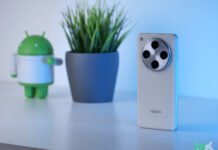The panorama of Android smartwatch is enriched with a novelty that, while initially passing under track, could significantly change the precision with which we locate objects and devices in our vicinity; The protagonist is Google Pixel Watch 3, which thanks to a recent update introduces unpublished feature in the Android world, the Channel Sounding of Bluetooth 6.0.
A technology that promises to compete with direct UWB (Ultra Wideband), but with a decidedly more widespread and potentially less expensive approach.
What is Channel Sounding and why it’s important
To contextualize it is necessary to take a step back, to date almost all Bluetooth devices have relied on a rather rudimentary method to estimate the distance from an object, taking advantage of the measurement of the signal power received (RSSI); This approach, although simple, is notoriously inaccurate, interference or obstacles are enough to make the location uncertain, with margins of error of several meters.
This is where Channel Sounding comes into play, this technology officially introduced by the Bluetooth Special Interest Group (Mr) in the new Bluetooth 6.0 standard is based on a much more sophisticated principle: calculate the time that a signal takes to travel the distance between two devicesthus obtaining precision at a centimeter level; It is the same logic that makes the UWB so reliable in the tracking of objects, but with the advantage of being able to support the widespread diffusion of Bluetooth.
Google Pixel Watch 3 became, almost quietly, the first Android device known to support Channel Sounding thanks to the update at Wear OS 5.1, which enabled the Feature_BlueTooth_le_channel_sounding system flag, a clear indicator that the bluetooth firmware has been updated to accommodate this advanced function.
So this technology is already usable in practice? The answer, at least for the moment, is negative; Although the technical support is qualified, Google has not yet released the final version of its Find Hub app for Wear OS, which will probably be the first to exploit the channel sounding to locate compatible devices.
In short, it is a sort of preparatory phase in view of a wider integration, which should materialize in the coming months.
One of the reasons why the UWB has remained a niche technology is linked to costs and hardware complexity, on the contrary bluetooth (and therefore also channel sounding) is already present practically everywhere; This means that, once the software adoption is completed and the firmware of the various devices updated, it will be possible to have a much more precise tracing than the traditional onewithout requiring additional components and with greater interoperability.
Of course, Channel Sounding does not come to match the millimeter accuracy of the UWB, but compared to the RSSI measurement it is still a jump of enormous quality; Google itself, in the compatibility requirements of Android 16, requires devices that support this technology to report the distance with an accuracy of ± 0.5 meters to 90 ° percentile, one meter away. In other words, a solid base on which to build a finally reliable tracking ecosystem.
At present, those who own a Google Pixel Watch 3 cannot yet test the Channel Sounding firsthand, but the qualification of the support is a clear signal that Google is preparing the ground for a new generation of location experiences. With the arrival of generic bees for measuring the distance, it will be easier for developers to integrate these functions into the tracking apps, bringing concrete benefits both for the search for lost objects, and for more creative use cases.



